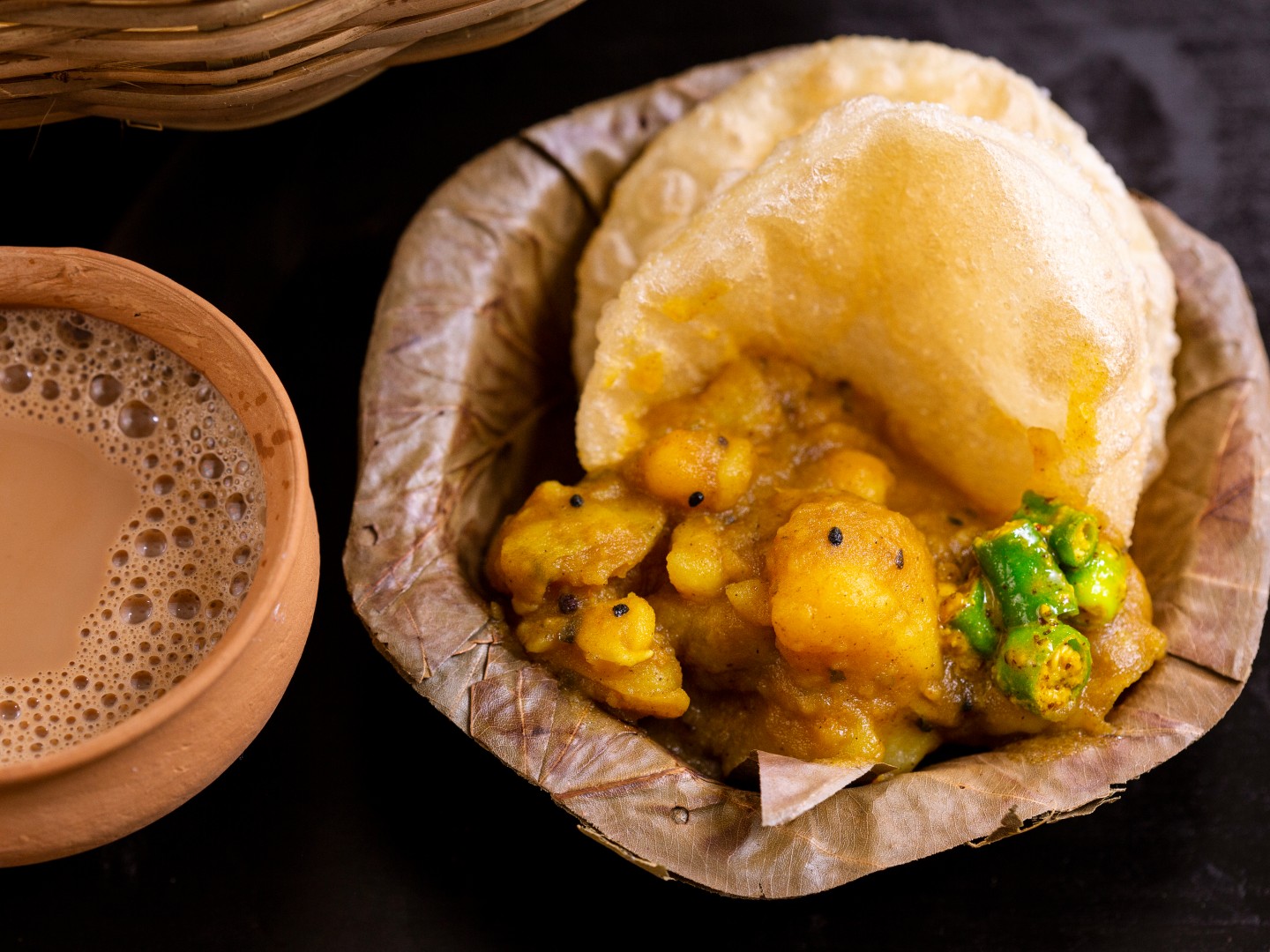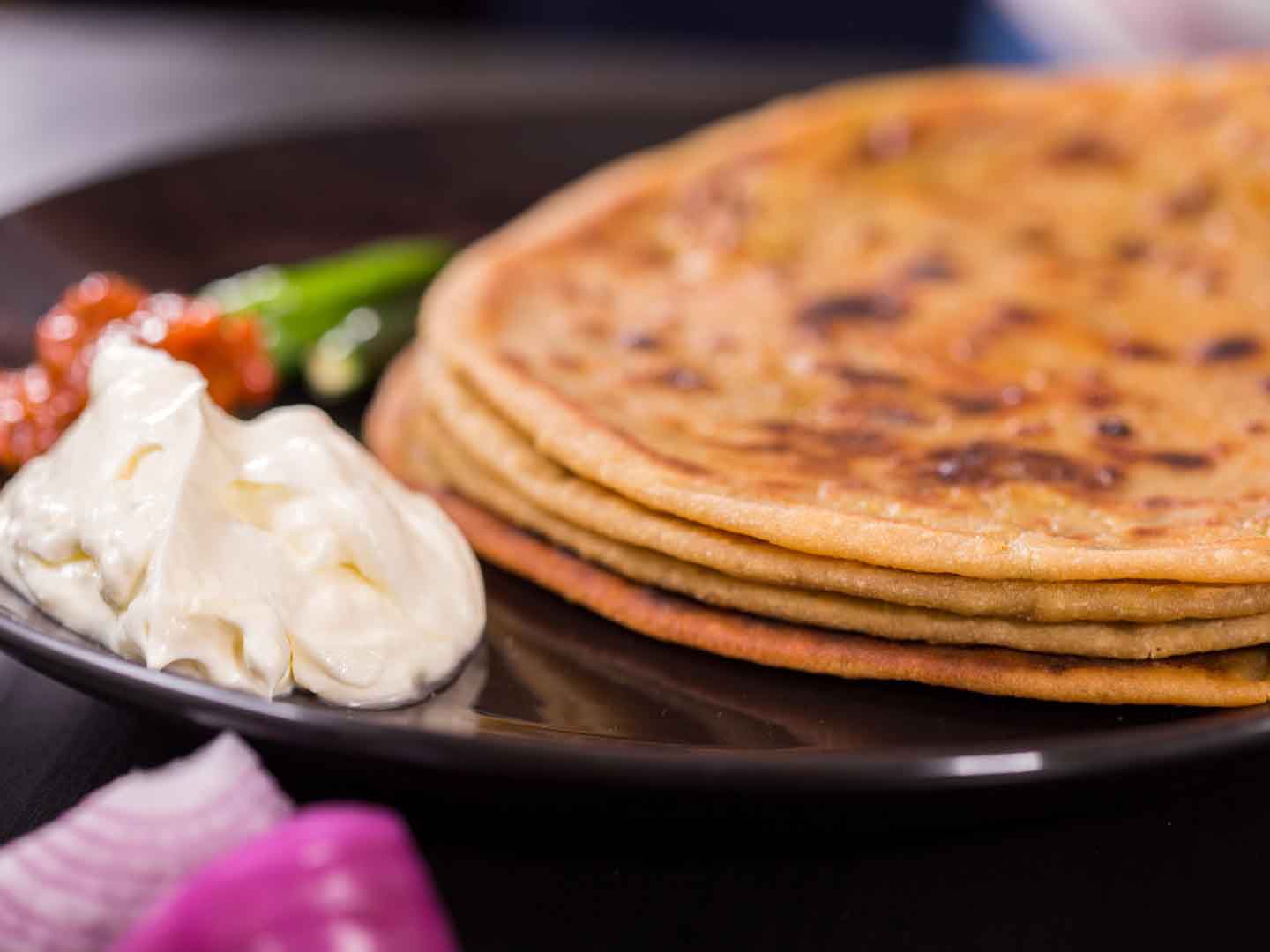Jhuri Alu Bhaja
Crisp, golden, Bengali potato fries
- Cooking time45 minutes
- Calorieskcal
Jhuri alu bhaja needs no qualification to occupy a spot in the Bengali cooking canon. Crispy, fried potato juliennes—served alongside some steaming rice, hot dal, and a wedge of lemon—tend to justify their own existence.
For this recipe, we’ve borrowed the principles of French-fry making, and applied them to jhuri alu bhaja. Three important things need to be kept in mind: (1) The cut potatoes should be washed in plenty of water to rid them of starch; (2) before frying, the potatoes must be thoroughly dried—any moisture will yield limp fries; and (3) the potato juliennes must be fried in a pan full of oil, at a steady temperature of 180°C (that is, the oil should be hot, but not so hot that it begins to smoke).
Without further ado, let’s get into the step-by-step guide to making the perfectly crisp jhuri alu bhaja every single time.
Books in this recipe
Ingredients
- 400 g potatoes
- 25 g peanuts
- 1 sprig curry leaves
- 500 g vegetable oil (for frying)
- ¼ tsp pepper (crushed)
- ¼ tsp salt
- ¼ tsp rock salt
- ¼ tsp chaat masala
- 1 pinch red chilli powder
Method
- Using a slicer, cut the potatoes into 2-mm-thick slices. Alternatively, you can also use a sharp knife and cut thin slices by hand. Reserve the slices in a large bowl of water to prevent the potatoes from oxidizing.
- Wash the potato slices in plenty of water to remove the starch. Doing so will allow the alu bhaja to crisp up nicely. Change the water 2–3 times during this process to make sure that most of the starch is gone. Drain the water when done.
- Now, lay out absorbent towels on a surface and spread out the washed potato slices in a single layer. We want the potatoes to be completely dry before we move on to the next stage—moisture will make the fries limp. Take your time. Dab them with another towel, or let them air dry for long as it takes for them to be completely dry.
- Bunch together 5–6 slices at a time, and chop them into matchsticks, 2-mm-wide.
- Heat about 500 g vegetable oil in a pan. The secret to non-greasy fries is to use a lot of oil. The excessive amount of oil will allow the potato juliennes to float freely, rather than lump together and trap steam. The temperature of the oil is also important for this recipe. It should be adequately hot (at around 180°C), but should never reach the smoking point.
- Once the oil is hot, fry the peanuts for 20 seconds, drain, and reserve for later. Do the same with the curry leaves, frying them for 10 seconds.
- Now, drop a small handful of potatoes into the oil. It is important not to overcrowd the pan. When the potatoes hit the oil, they will release a lot of steam. With time, the bubbles will gradually start subsiding (in about 3 minutes or so). The process of frying essentially serves to dehydrate the potatoes—and that is what lets them turn crisp, and stay crisp, longer. When the moisture has evaporated as steam bubbles, you know that the alu bhaja is crunchy. Fry for another 2 minutes for it to develop colour.
- Strain the alu bhaja from the oil, and transfer to a perforated vessel (such as a colander or wicker basket) to cool. A basket allows the remaining steam to get out. Otherwise the steam will condense into water as the fries cool, making them limp.
- Garnish with the fried peanuts and curry leaves.
- FOR THE SEASONING, mix together the freshly ground pepper, salt, rock salt, chaat masala, and red chilli powder in the given proportions. Sprinkle this mix on the alu bhaja just before eating. Salt, being hygroscopic, tends to absorb moisture from the air, and turn the crisps soggy. Without the seasoning, the alu bhaja should keep for up to 7 days in an airtight container.




























